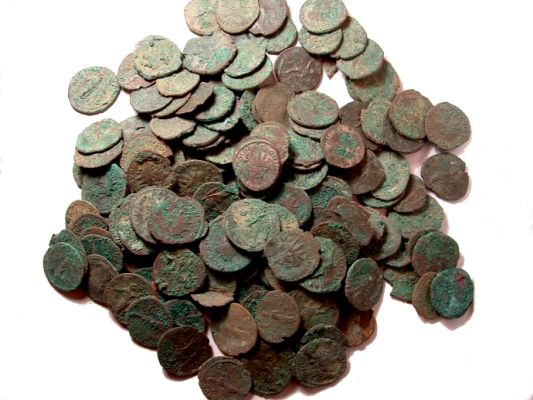
People suggest that the arrangement of the three emperors on the CARAVSIVS ET FRATRES SVI coinage shows a deference to Diocletian in that he is central and flanked by his junior colleagues Maximianus and Carausius. This seems reasonable as Carausius may have been trying to build bridges with the legitimate emperors of the time.
The same may not be strictly true of the Romano-British coins that feature the rulers separatley in that there is a differentiation in the bust styles between Carauius and his two "brothers".

Carausius is usually portayed with a draped and cuirassed bust,

whilst Diocletian and Maximianus are usually cuirassed only, perhaps suggesting the seniority of Carausius, in the British isles at least.
It is by no means an exclusive division of the portraiture but it does appear to have been the normal way.
This looks as if it may be an extension of the convention from earlier times when caesars were bare headed whilst the emperor was depicted laureate. Similarly in the third century when the radiate crown became the usual way of portraying the male personalities on antoniniani the caesars were differentiated frequently by being represented by a draped bust whereas the emperor was draped and cuirassed.
The same may not be strictly true of the Romano-British coins that feature the rulers separatley in that there is a differentiation in the bust styles between Carauius and his two "brothers".

Carausius is usually portayed with a draped and cuirassed bust,

whilst Diocletian and Maximianus are usually cuirassed only, perhaps suggesting the seniority of Carausius, in the British isles at least.
It is by no means an exclusive division of the portraiture but it does appear to have been the normal way.
This looks as if it may be an extension of the convention from earlier times when caesars were bare headed whilst the emperor was depicted laureate. Similarly in the third century when the radiate crown became the usual way of portraying the male personalities on antoniniani the caesars were differentiated frequently by being represented by a draped bust whereas the emperor was draped and cuirassed.









